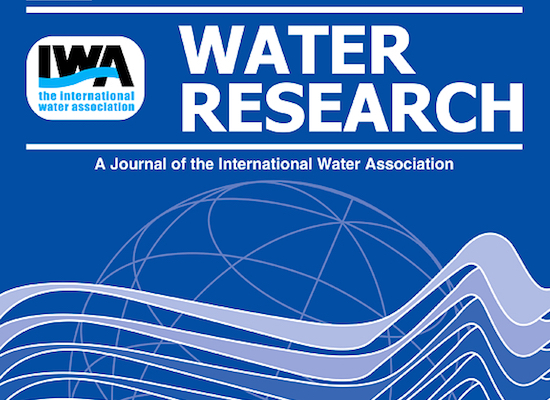
Ammonia recovery from anaerobic digester centrate using onsite pilot scale bipolar membrane electrodialysis coupled to membrane stripping
Authors: Federico Ferraria,b, Maite Pijuana,b, Sam Molenaarc, Nick Duinslaegera,b, Tom Sleutelsd, Philipp Kuntked,e, Jelena Radjenovica,f
a Catalan Institute for Water Research (ICRA), Emili Grahit 101, 17003 Girona, Spain
b University of Girona, 17003 Girona, Spain
c W&F Technologies, Noordhaven 88a, 4761 DC Zevenbergen, the Netherlands
d Wetsus, European Centre of Excellence for Sustainable Water Technology, Oostergoweg 9, 8911 MA Leeuwarden; P.O. Box 1113, 8900 CC Leeuwarden, the Netherlands
e Environmental Technology, Wageningen University, Bornse Weilanden 9, 6708 WG Wageningen; P.O. Box 17, 6700 AA Wageningen, the Netherlands
f Catalan Institution for Research and Advanced Studies (ICREA), Passeig Lluís Companys 23, 08010 Barcelona, Spain
Published in: Water Research 2022, 218, 118504 (30 June 2022)
Abstract: Ammonia recovery from centrate of an anaerobic digester was investigated using an onsite bipolar-electrodialysis (BP-ED) pilot scale plant coupled to two liquid/liquid membrane contactor (LLMC) modules. To investigate the process performance and robustness, the pilot plant was operated at varying current densities, load ratio (current to nitrogen loading), and in continuous and intermittent current (Donnan) mode. A higher load ratio led to higher total ammonium nitrogen (TAN, sum of ammonia and ammonium) removal efficiency, whereas the increase in the applied current did not have a significant impact the TAN removal efficiency. Continuous current application resulted in the higher TAN removal compared with the Donnan dialysis mode. The lowest specific energy consumption of 6.3 kWh kgN−1 was recorded in the Donnan mode, with the load ratio of 1.4, at 200 L h−1 flowrate and current density of 75 A m−2. Lower energy demand observed in the Donnan mode was likely due to the lower scaling and fouling of the ion exchange membranes. Nevertheless, scaling and fouling limited the operation of the BP-ED stack in all operational modes, which had to be interrupted by the daily cleaning procedures. The LLMC module enabled a highly selective recovery of ammonia as ammonium sulfate ((NH4)2SO4), with the concentration of ammonia ranging from 19 to 33 gN L−1. However, the analysis of per- and polyfluoroalkyl substances (PFASs) in the obtained (NH4)2SO4 product revealed the presence of 212–253 ng L−1 of 6:2 fluorotelomer sulfonate (FTS), a common substitute of legacy PFAS. Given the very low concentrations of 6:2 FTS (i.e., < 2 ng L−1) encountered in the concentrated stream, 6:2 FTS was likely released from the Teflon-based components in the sulfuric acid dosage line. Thus, careful selection of the pilot plant tubing, pumps and other components is required to avoid any risks associated with the PFAS presence and ensure safe use of the final product as fertilizer.
Download: link to article
DOI:10.1016/j.watres.2022.118504
License: CC-BY-NC-ND4.0
